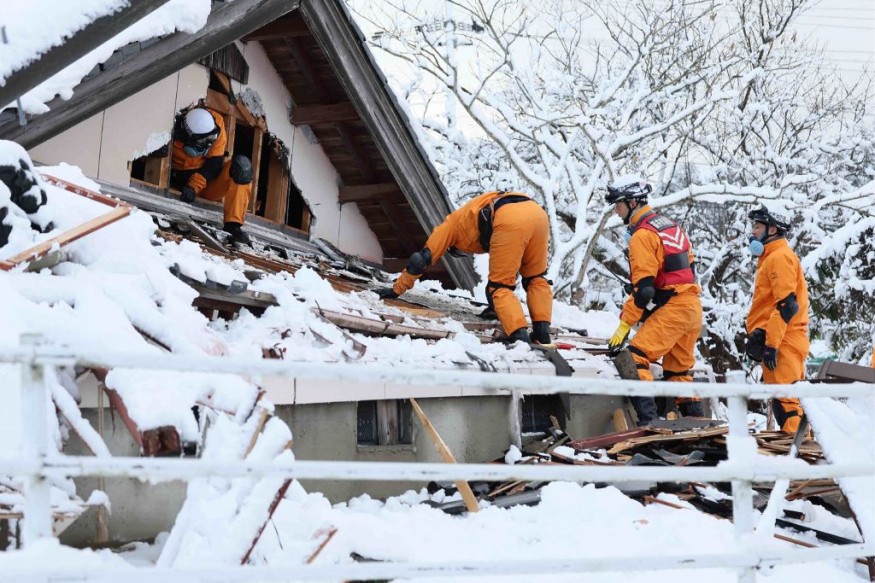
Aftershocks have made relief operations in the aftermath of the powerful earthquake in Japan challenging.
This as tremors often buried homes and blocked roads, making it difficult for rescue teams to push through with their mission.
Authorities said that the number of deaths in the deadly quake has already climbed to 161. Meanwhile, those unaccounted for are still at 103.
Challenging Rescue Operations
Thousands of rescuers have been deployed from all over Japan to rescue and help survivors, with their work being challenged by roads that were cut off by the earthquake and an estimated 1,000 landslides.
Among the survivors was a woman in her 90s who was rescued from a crumbled home in Suzu, Ishikawa Prefecturew. She was trapped in the rubble for approximately 124 hours.
Furthermore, in the last two days, the region has been blanketed in snow, making the search and rescue operations more difficult.
So far, at least 2,000 people in many communities on the remote peninsula have been cut off by damaged roads. This means that relief materials and assistance have been slow to reach communities that are suffering from water and power outages.
Thousands of troops were deployed as they bring in water, food and medicine to the more than 30,000 people who had evacuated to auditoriums, schools and other facilities.
Ishikawa officials said that 1,370 homes were completely or partially destroyed. Many of the residences in the western coastal region of the main island are already aging and wooden.
Vehicles have also laid tossed on cracked, bumpy roads as snow blanketed the debris and highways.
It can also be noticed how wires dangled from lopsided poles.
Aid Package For Victims
In the wake of the devastating earthquake that struck the country's central region, the government of the United States has provided support to its friend and ally, Japan. Other countries have also extended support to Japan.
Recognizing the situation's human urgency and the increasing toll on the affected communities, the US government had immediately responded to Japan's need of assistance.
The US' immediate $100,000 aid package through Peace Winds Japan is just the beginning of its support, which included essential resources like blankets, water, and medical supplies.
The US said it understands that the challenges in Ishikawa Prefecture are significant, with access to the disaster-hit areas being severely hampered.
The US vowed to continue to stand with Japan through the immediate response and the longer recovery and rebuild journey.
On January 1, the US Geological Survey's National Earthquake Information Center detected a magnitude 7.5 earthquake at a relatively shallow depth of 6 miles (10 kilometers) near the northern coast of the Noto Peninsula on the west coast of Honshu, Japan.
Based on the intensity of the tremors caused by the earthquake, officials have estimated that property and economic damages could potentially exceed $1 billion.
The strong earthquake caused severe shaking in the city of Nanao, with a population of 45,000.
Meanwhile, experts said that the shaking in Tokyo were believed to be lighter.
Related Article : Japan Quake Update: Troops Double Forces As Hundreds Still Missing; Death Toll At 100
© 2025 NatureWorldNews.com All rights reserved. Do not reproduce without permission.





